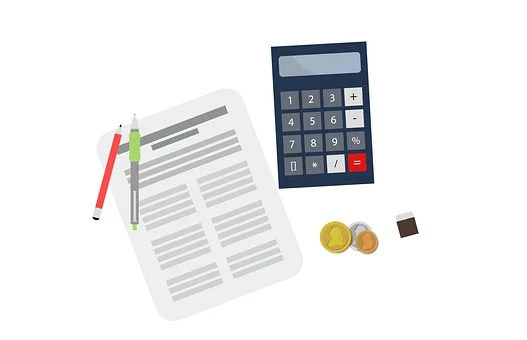Want a copy of this guide to keep? Send me the PDF 📩
When you run an LLC (limited liability company), paying yourself is a little more complicated than it is when you run a sole proprietorship. How you take money out of your small business will depend on whether it’s a single member or multi member LLC. On top of that, if you’re an employee of your own business, the IRS expects you to pay yourself “reasonable compensation.” Here’s how to pay yourself through your LLC, and make sure your earnings fit IRS guidelines when you file your tax return.
Is your LLC a sole proprietorship, partnership, or corporation?
Your LLC is a shapeshifter—it can file taxes as many different types of business entities. Depending on which structure you elect at tax time, the IRS will treat it as either a sole proprietorship, partnership, or corporation.
If you’re the only member of your LLC, it’s a single-member company, and it’ll be taxed as a sole proprietorship. If your LLC has multiple members, you can elect to be taxed either as a partnership or a corporation.
Even though they’re both multi-member entities, corporations and partnerships are taxed differently. That means members get paid differently, too.
Suggested resource: What’s the LLC Tax Rate? How Limited Liability Companies are Taxed
How to pay yourself from a single member LLC
You pay yourself from your single member LLC by making an owner’s draw.
Your single-member LLC is a “disregarded entity.” In this case, that means your company’s profits and your own income are one and the same. At the end of the year, you report them with Schedule C of your personal tax return (IRS Form 1040). Making an owner’s draw is like officially noting the fact that some of your LLC’s income is staying in the company as retained earnings, and some of it you’re taking for personal use.
How to make an owner’s draw
Making an owner’s draw is pretty simple. It only has two steps:
- Write yourself a check from your business account for the amount you’re taking out of your business. You’ll deposit this check in your personal bank account.
- Record the withdrawal on the books as an owner’s draw—a reduction in your owner’s equity account. credit from your owner’s equity or capital account.
Using double-entry bookkeeping, an owner’s draw of $1,000 would look like this:
| Debit | Credit | |
|---|---|---|
| Owner’s Equity | $1,000 | |
| Owner’s Draw | $1,000 |
How to pay taxes on your owner’s draw
As a sole proprietor, you pay income tax on all of your profits, regardless of how much you actually draw. Even if you leave your profits in the business, you’re still responsible for paying tax on your earnings.
In addition to federal, state, and local income taxes, you also need to pay self-employment taxes on your draw. Similar to the FICA taxes that get withheld from an employee’s paycheck, self-employment taxes consist of money paid for Social Security and Medicare. The self-employment tax rate is 15.3%.
Almost all businesses make quarterly tax payments. To learn how to withhold these, check out our guide on how to calculate and pay estimated tax.
How to pay yourself from a multi-member LLC
How members of a multi-member LLC get paid depends on whether it’s a partnership, or a corporation. By default, the IRS treats every multi-member LLC as a partnership.
Paying yourself with a partnership LLC
Partners in an LLC can take their earnings as draws, much like a single-member LLC.
However, the partnership is a “pass-through” entity. Meaning, while it reports its income to the IRS with IRS Form 1065, the partnership isn’t taxed.
Instead, each member pays a portion of the total income tax on the partnership’s earnings. The size of that share is determined by the partnership agreement.
At year end, each member receives an IRS Schedule K-1 from the partnership, reporting their share of the partnership’s income. Schedule K-1 is used to prepare the partners’ personal income tax return.
Importantly, they pay full income tax on their share, even if they don’t draw all of it. So if your share in a partnership is 25%, but you only take half of that as a draw, you still pay income tax on 25% of the partnership’s earnings.
The money you draw as a partner isn’t charged income tax again. However, you’ll need to pay self-employment taxes—15.3%—on it.
To protect your income as your LLC is ramping up and becoming profitable, you can set up guaranteed payments. This will ensure you’re paid out a minimum amount to partners regardless of profit.
Paying yourself from a corporate LLC
Shareholders (LLC members) in either an S corporation or a C corporation can’t be paid in draws. Instead, they must be hired on as employees, and paid a salary.
After that salary, they may take an extra percentage of the corporation’s income in the form of dividends. How much they take in dividends is laid out in the articles of incorporation.
As an employee of your corporation, your income tax and payroll tax are automatically withheld from your earnings.
Keep in mind that C corporations are double taxed. Meaning, the IRS charges your corporation income tax. Then, everyone who earns wages or dividends from the corporation pays personal income tax on their earnings.
One benefit of dividends: They’re exempt from payroll tax. So, the more of your income you receive as dividends, the less tax you need to pay. That being said, the IRS expects you to pay yourself “reasonable compensation.”
How much to pay yourself from your LLC
When you earn a share of your LLC’s profits as salary, you need to make sure you’re paying yourself adequately. If you’re earning a $1,000 salary from your LLC that files a corporation, and an additional $90,000 as dividends, you’ll pique the IRS’ interest. That’s because you aren’t paying payroll tax on the $90,000.
But when the IRS says you should pay yourself a “reasonable” salary, what do they mean by “reasonable”? They never explain.
Here’s the best method:
- Take all your personal expenses for the year and add them up. That’s the minimum amount you need to earn.
- Look at your bookkeeping with an accountant, and figure out how much your business can afford to pay you, beyond the cost of covering personal expenses.
- Review earnings statistics according to industry and job position. Find the average salary range for your job.
- Pay yourself a reasonable salary.
The less you earn as a salary, and the more as dividends, the fewer taxes you’ll have to pay. The trick is striking the right balance. An accountant can help with this.
The best way to pay yourself from an LLC
When your LLC pays a small business owner a salary, they’re on payroll; getting money from the company is fairly straightforward.
But what about owner’s draws? What’s the best way to move money from your business to your personal account?
Bottom line: You need to leave a paper trail. When you make a draw, there must be records from a financial institution reporting how much you took.
If there’s no official record of the draw, the lines blur between your personal income and business finances. In the case of legal action or a lien, tax court may decide the liability protection of your LLC doesn’t apply—so your personal assets are on the line.
So, a check works fine, and so does an online transfer. Taking cash out of the safe and spending it? Not so much.
Other than that, it’s your right as a business owner to take as many draws as you like, whenever you like. So long as you leave a solid paper trail, you’re good to go.
What’s Bench?
We’re an online bookkeeping service powered by real humans. Bench gives you a dedicated bookkeeper supported by a team of knowledgeable small business experts. We’re here to take the guesswork out of running your own business—for good. Your bookkeeping team imports bank statements, categorizes transactions, and prepares financial statements every month. Get started with a free month of bookkeeping.



